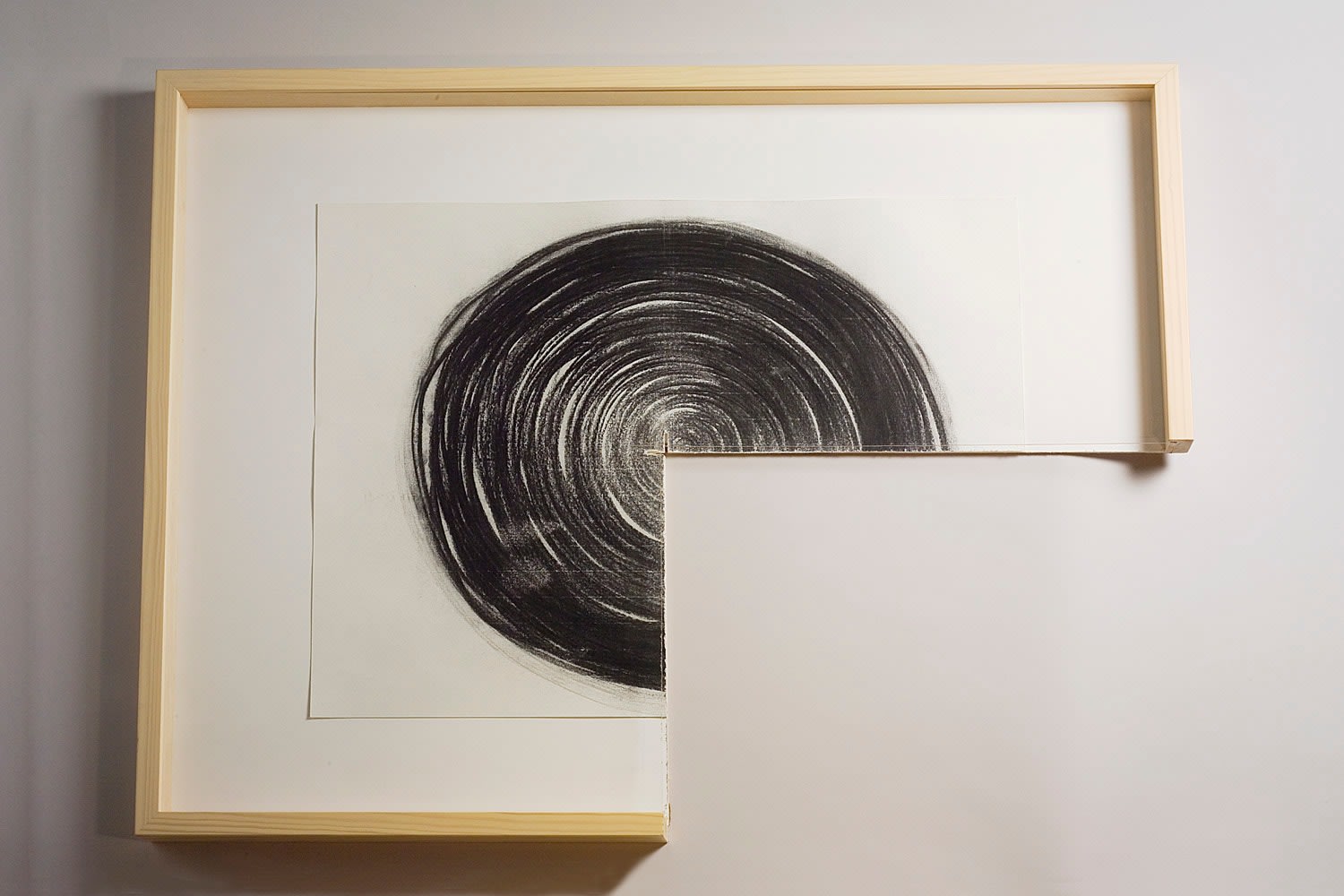 “Ninety Thousands Only”
〈玖萬元整〉
“Ninety Thousands Only”
〈玖萬元整〉
 “Thirty Thousands Only”
〈參萬元整〉
“Thirty Thousands Only”
〈參萬元整〉
 “Ninety Thousands Only” document
〈玖萬元整〉文件
“Ninety Thousands Only” document
〈玖萬元整〉文件
 “Thirty Thousands Only” document
〈參萬元整〉文件
“Thirty Thousands Only” document
〈參萬元整〉文件
 “The Cost of Concept” document
〈觀念的代價〉文件
“The Cost of Concept” document
〈觀念的代價〉文件
 Installation view
展場照
Installation view
展場照
Shi Jin-Hua
42 x 29.7 cm (“Thirty Thousands Only” document),
42 x 29.7 cm (“Ninety Thousands Only” document),
42 x 29.7 cm (“The Cost of Concept” document).
Further images
Contemporary Art Alchemy is a project originated from the 2008 global financial crisis. The art market seriously contracted at the time. As a result galleries organized joint exhibitions with artworks at lower prices and smaller sizes to boost the tightening market. I was repeatedly asked to submit artworks under NTD30,000 for the exhibition.
I did not have works priced at under NTD30,000 at the time, so I decided to resort to conceptual art. I cut off the bottom right quarter of a piece of artwork called Pen Walking #24, originally priced at NTD120,000, and priced it at NTD30,000. The newly-created piece was named Thirty Thousands Only. The remaining 3/4 of the original artwork was then priced at NTD90,000 and renamed Ninety Thousands Only accordingly. Only 1/4 and 3/4 of the conceptual document were printed out to complement the actual artworks. It was proposed that the buyer pay additional NTD60,000 to buy the complete set of conceptual documents. In the end, two different collectors bought the two final artworks, yet the complete set of conceptual documents was not sold. I think this was all for the best. Since collectors were unwilling to spend money on buying “concepts,” the concern and philosophy behind The Cost of Concept was highlighted.
Pen Walking #24 was originally in a class of its own, yet under the demands of a commercial market, I, by dividing up my work, created two pieces which highlighted the process of art, namely, Thirty Thousands Only and Ninety Thousands Only. The two pieces served as a pilot for The Cost of Concept.
As a conceptual artist, I am often asked the questions, “How do we archive concepts?” “Do concepts really carry value?” “Could concepts be considered art?” In fact, the question most often asked is the question of price. “Is such an vacuous, abstract idea worth this price?” To be honest, these are not questions artists need to deal with, but something for galleries and the collectors to think about. The so-called “aesthetic meaning and value” is the result of combining the text and the discourse of art. Buying a painting may seem like a simple act at first glance, yet one cannot ignore the larger context (historical, aesthetic, commercial, and the market). When appreciating, studying or dealing with art commercially, these contexts appear and form meaning, value, and price.
In The Cost of Concept, I tried to make the context concrete through documents to showcase the state that “concepts” come after we materialize and put a price tag on them. I tried to imply that perhaps the existence and integrity of conceptual art could be preserved by money.
當時我並沒有定價3萬元以下的作品,於是決定以觀念藝術應對,將一件名為〈走筆#24〉定價12萬元的作品用鋸台切下右下角的1/4,定價3萬元,新作於是更名為〈參萬元整〉。至於3/4的那部分作品則定價9萬元,取名為〈玖萬元整〉。伴隨物體的觀念文件也只局部印出1/4與3/4,然後提議購買者若是要收藏完整的觀念文件,就要再付6萬元購買。最後切割的作品〈參萬元整〉與〈玖萬元整〉分別為二買家典藏,但是完整的觀念文件卻乏人問津。這結果更好,就因為藏家不願意購買「觀念」,恰好顯示作品〈觀念的代價〉的生動過程與問題核心。
〈走筆#24〉一作原有自己的脈絡,但在商業市場的考量與要求下,藝術家以切割的動作產生了〈參萬元整〉與〈玖萬元整〉兩件過程作品,以此扮演〈觀念的代價〉的引子角色。
從事觀念藝術創作,常被質疑:「觀念如何典藏?」「觀念有價值嗎?」「它算是藝術嗎?」其實這當中真正被質疑的是價格的問題:「那麼虛、那麼抽象的東西,值這個價嗎?」老實講,這些問題不是藝術家的問題,它們是畫廊與藏家的問題。所謂「美學的意義與價值」是由文本與脈絡二者結合產生的結果,買一張畫看似單純,但其實它是跟著一大掛看不見的脈絡入庫的(歷史、美學、商業與市場的)。在鑑賞、研究與商業處理時,這些脈絡就會現起,形成意義、價值與價格。
在〈觀念的代價〉一作中,我將脈絡具體文件化,呈現「觀念」在物質化與有價化後真實存在的狀態,諷喻或許觀念藝術的存在性與完整性,是可能以金錢救贖的。
◆《當代藝術煉金術》首部曲〈觀念的代價〉2008|鉛筆、紙、文件|作品圖 88 x 110 cm ,〈參萬元整〉文件:42 x 29.7 cm ,〈玖萬元整〉文件:42 x 29.7 cm,〈觀念的代價〉文件:42 x 29.7 cm
Exhibitions
2014 “Unceasing Reincarnation”, Show Gallery, Kaohsiung, Taiwan
2010 “Taipei Biennial”, Taipei Fine Arts Museum, Taipei, Taiwan2010 “The Trilogy of Contemporary Art Alchemy”, Inart Space, Tainan, Taiwan
2010 “Contemporary Art Alchemy: Shi Jin-Hua”, Nou Gallery, Taipei, Taiwan
2014「浮生未歇」,小畫廊,高雄,台灣
2010「2010台北雙年展」,台北市立美術館,台北,台灣2010「當代藝術煉金術三部曲」,加力畫廊,台南,台灣
2010「再展石晉華 當代藝術煉金術」,新畫廊,台北,台灣
Publications
2013 “Shi Jin-Hua”, Mind Set Art Center, Taiwan2013 《石晉華》,安卓藝術股份有限公司,台灣





